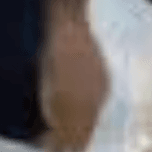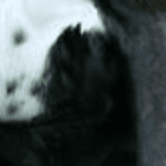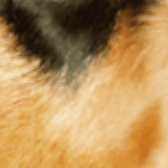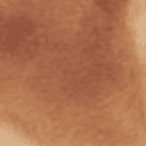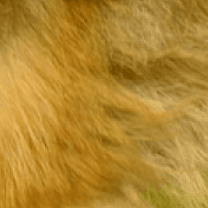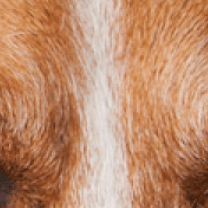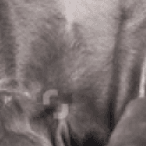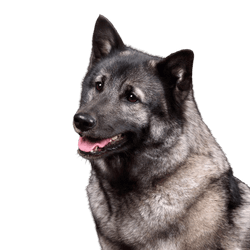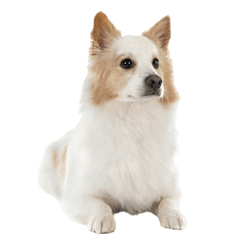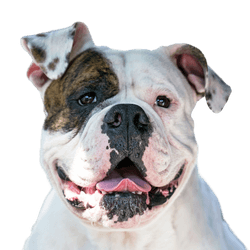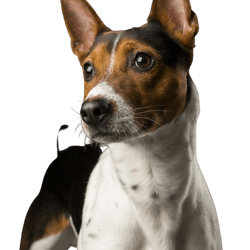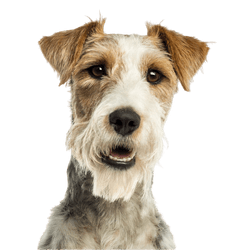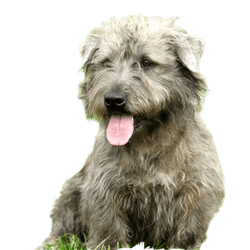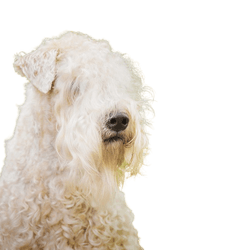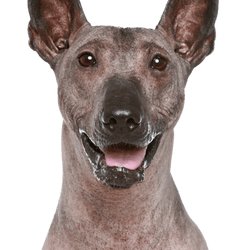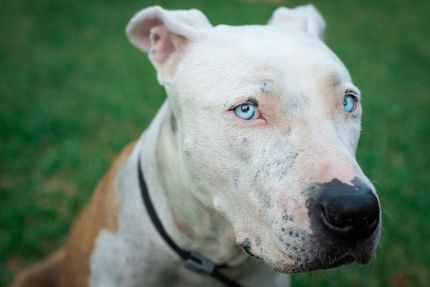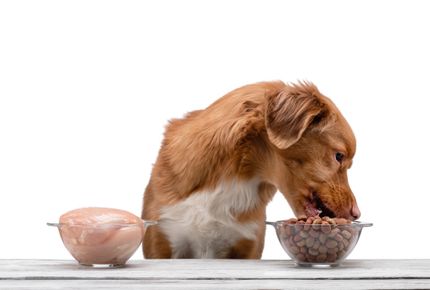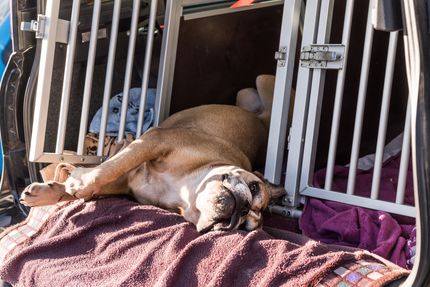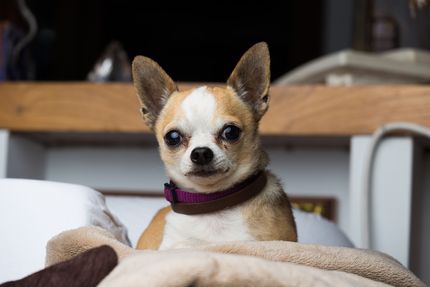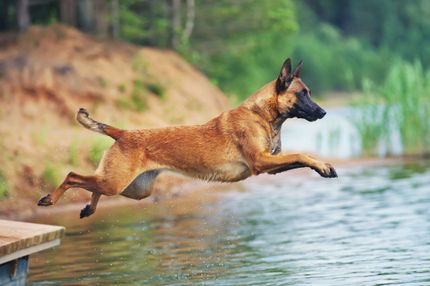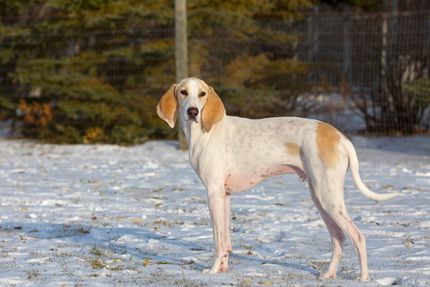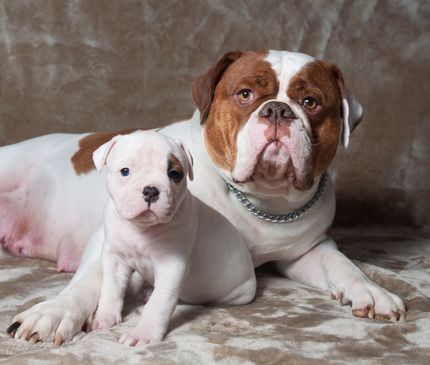Facts & Origin
Origin and history of the English Cocker Spaniel
The addition of "English" became necessary because of the existence of the "American Cocker Spaniel" in the USA. The AKC officially recognized them as separate breeds in 1946.
The English Spaniel breeds were developed centuries ago from dogs of Spanish descent (the word "spaniel" is derived from "Spanish"). This was long before the invention of reliable hunting rifles, when bird hunters used dogs in conjunction with nets, bows, and sometimes hawks. Early authorities did not divide spaniels by breed, but by type: either water or land spaniels. Land spaniels were subdivided by size. The larger types were the "springing spaniel" and the "field spaniel," and the smaller ones, which specialized in tracking woodcock, were called "cocking spaniels."
In the 19th century, the advent of dog shows combined with the classification mania of Victorian England led to the designation of the various types of spaniels as official breeds. This gave rise to the English Springer Spaniel, the Field Spaniel, the English Cocker Spaniel, and eventually all of today's British Spaniel breeds.
English vs. American Cocker Spaniel
| English Cocker Spaniel | American Cocker Spaniel |
|---|---|
| English Cocker Spaniel | American Cocker Spaniel |
| Retriever dogs - Retriever dogs - Water dogs | Companion dog |
| Working test | smaller, more luxuriant coat, shorter head |
| urge to move | adaptable, less prey drive |
| needs exercise - intelligent | not so demanding |
Hunting behavior of the English Cocker Spaniel
This English breed was bred as a hunting dog. They are flushing and retrieving dogs, which do not rush the game like other dogs, but only flush it out and drive it in front of the hunter's shotgun. As a rummaging dog for tracking poultry and small game, its breed-specific characteristics include its eagerness to bark (make a sound) when stimulated by hunting. After the shot, the dog must retrieve the killed piece.
Famous Cocker Spaniels
A Cocker Spaniel named Lupo is the pet of the Duke and Duchess of Cambridge, also known as Prince William and Kate Middleton.
Suitability and attitude
The Cocker Spaniel is suitable as a hunting, tracking, retrieving, and family dog. However, one should consider his innate barking tendencies when keeping him indoors and in apartment buildings.
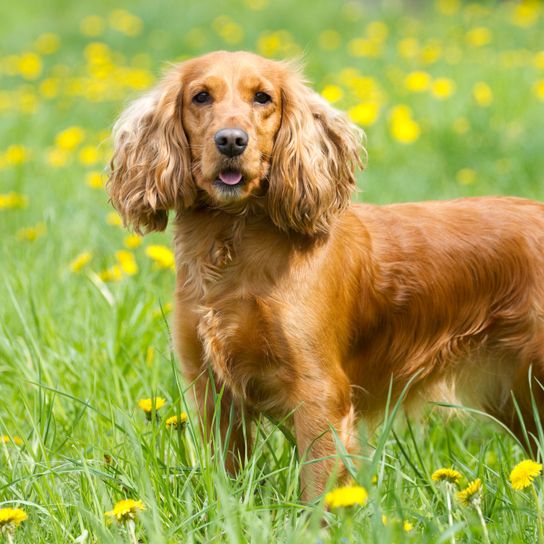
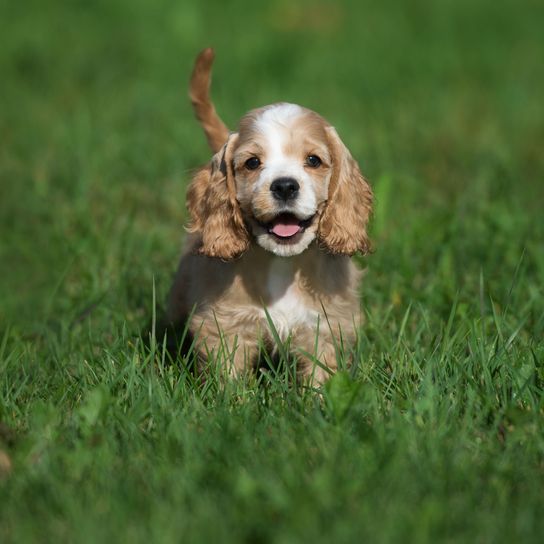
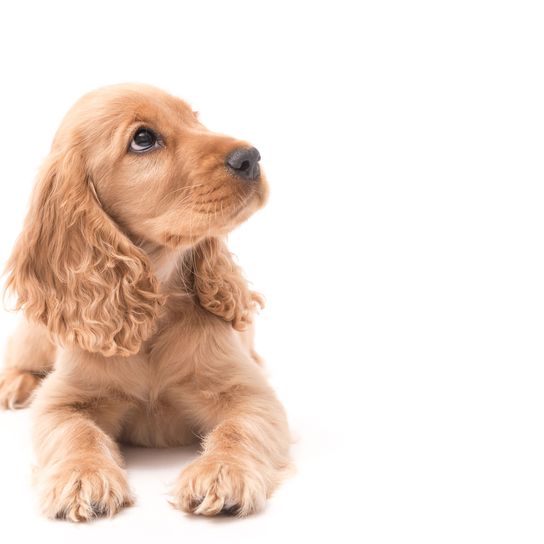
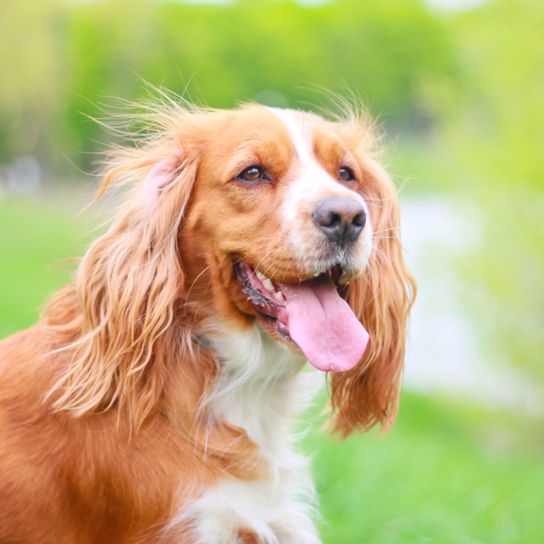
| Alternate Name | English Cocker Spaniel |
| Origin | England |
| Life expectancy | 10 - 17 years |
| Care requirements | high-maintenance |
| Activity level | average |
| FCI group | Flushing Dogs |
| AKC group | Sporting Group |
| KC group | Gundog Group |
Cocker Spaniel mixes
Attitude, character and temperament of the breed
Typical character traits of the Cocker Spaniel.
Basically, the English Cocker Spaniel is people-oriented and is very sociable towards children and other dogs. He is playful and sometimes cuddly. He is very attached to his human friend and loves to romp around with him. Typical is also his tireless tail playing and his typical eager movement, mainly when following a trail, which he fearlessly pursues in impassable thickets.
The dog is extremely curious, always eager to explore its surroundings and not suspicious of strangers. He makes friends quickly, as he is relatively open to strangers, and spreads true joie de vivre.
Training and education
This from the beginning inbred behavior make an attitude of the Cocker Spaniels not exactly easy, which is due to his very pronounced urge to move on the one hand, on the other hand the Jadgtrieb. Daily walks of at least 2-3 hours belong to the obligatory program. But also in dog sports, agility, as well as retrieving games, the dogs have great joy. Furthermore, they are well suited as companions for jogging or cycling.
The education of the docile dogs can also succeed beginners, provided that one is with commitment and sufficient consequence. Otherwise, the Cocker Spaniel can become quite stubborn and dance on the nose of its owner.
Character
Usage
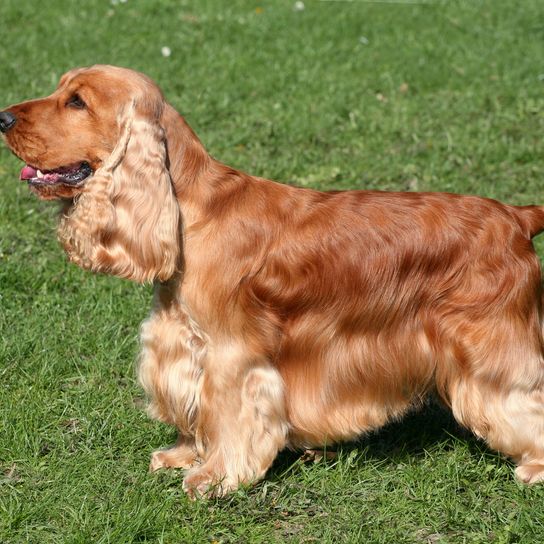
Breed specific diseases of the English Cocker Spaniel.
The Cocker Spaniel often has ear problems due to its large, drooping ears. This can be prevented by regular cleaning of the ears. Furthermore, the breed also suffers from hereditary diseases.
- Ear infections: Inflammation of the external auditory canal.
- Lips eczema: red, weeping inflammation of the skin around the lips
- familial nephropathy: a kidney disease occurring in early youth. The responsible disease gene can be well controlled by correct breeding selection.
- Cockerwut: epilepsy-like nervous disease with a tendency to spontaneous aggressiveness (this genetic defect is relatively rare, however)
- progressive retinal atrophy: in this hereditary eye disease the retina of the dogs slowly dies, which leads to blindness of both eyes
Care and health maintenance
Grooming is limited to daily brushing and occasional (every 2-3 months) trimming at the groomer. This trims excess hair on the back, under the ears and on the belly. The diet is uncomplicated. The "English Cocker Spaniel" naturally eats a lot and quickly and tends to be overweight. Therefore, food quantity and especially treats should be kept in mind.
Buying and breeding the English Cocker Spaniel
If you have now caught fire and want to buy an English Cocker Spaniel, it is best to get a puppy from a breeder. In Germany there are a lot of breeders who are dedicated to Cocker Spaniel breeding. You should pay attention to the affiliation to a VHD club. Then you can be sure that it is a serious breeder. A Cocker Spaniel puppy costs about 1.000 Euro. By the way, the spaniel breeding in Germany is closely connected with the one in Austria and Switzerland. Already more than 90 years ago a common studbook was kept.
But if you want to help dogs in need, check out your local animal shelter or one of the Cocker-in-Not initiatives. Maybe there is already a suitable animal waiting for you.

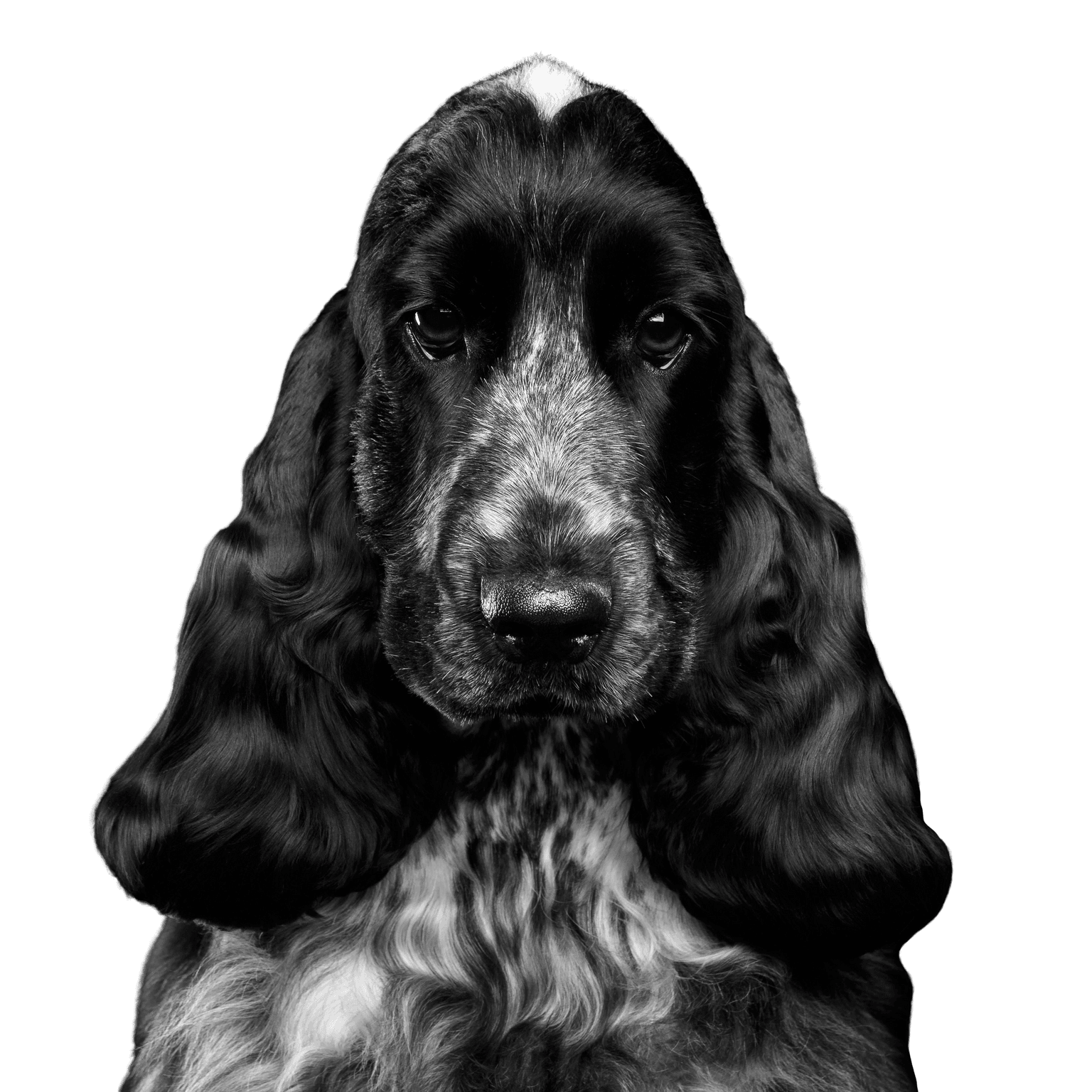
Breed characteristics of the Cocker Spaniel
The English Cocker Spaniel is a British dog breed recognized by the FCI in FCI Group 8 (Retrievers - Water Dogs), Section 2 (Retrievers), Standard No. 5 with working test. The official name of the dogs is "English Cocker Spaniel".
Males are approximately 39-41cm, bitches 38-39cm tall. At the same time English Cocker Spaniels weigh about 13-14,6kg. This breed shows an impeccable action in gait with a lot of thrust and space grip.
The head
The English Cocker Spaniel has a well-developed, clearly chiseled head with a pronounced stop placed midway between the tip of the nose and the occiput. The cheeks do not protrude.
The muzzle
The muzzle should be sufficiently large to permit easy picking up of faint scent. The muzzle itself has a square shape.
A strong jaw as well as a scissor bite, with the upper incisors closely overlapping the lower incisors and the teeth set square to the jaws, is recorded in the breed standard.
The eyes & ears
The English Cocker Spaniel has large but not prominent eyes of a (dark) brown color; in liver browns, liver browns and liver brown/whites they are dark hazel and in harmony with the coat. They have an intelligent and gentle expression with tight eyelid rims, which should nevertheless be bright, luminous and cheerful tight eyelid rims.
The lobed ears, well covered with long, smooth and silky hair, are set at eye level. The leather should be thin and reach the tip of the nose.
The torso
Derm muscular, dry neck is nicely set in well sloping shoulders, leading into a strong, compact body with a firm, straight topline that slopes slightly from the end of the loin to the base of the tail. At the same time, the loins are short and broad.
The rib cage is well developed in breed specimens with a deep reaching sternum. The ribs are well sprung.
The tail
The strong base of the tail is slightly below the topline. It is carried happily moving and straight, never raised, tapering such to a fine tip. Good feathering in keeping with the body coat is typical.
Formerly usually docked, it was, however, neither so short as not to show the tireless, happy movement at work, nor so long as to interfere with it. Fortunately, docking has also become less common. Then the tail is slightly curved and in good proportion to the size of the body, so that the appearance is balanced; ideally in its length it does not reach below the hocks.
The limbs
In general, the Cocker Spaniel has legs of good bone strength, straight as well as sufficiently short for concentrated power development but not too short so as not to interfere with enormous eagerness. His shoulder is sloping and dry. The broad, muscular hindquarters have good roundness, and his rear pastern under the hock is short, allowing plenty of thrust.
Both the front and hind feet should be firm, thickly padded, and similar to the cat's paw.
The coat
This breed is known for its smooth hair, which has a silky texture and is never wiry or wavy, not too abundant and never curly. The conformation, front and hind legs should be well feathered above the hock.
In terms of color, the cocker spaniel occurs in solid black, red, gold, liver (chocolate brown) and black or brown with tan. In these colors no white is allowed except a small patch on the chest. Multicolored is distinguished between bicolored, where one spot is allowed (black, orange, brown and lemon, each with white), and tricolored (black, white with tan and brown, white with tan). Molds can be blue, orange, lemon or brown. Blue and brown molds with tan are also allowed.
| Fur length | medium |
| Fur | wavy |
| Ear shape | Floppy Ear |
| Tail | fanned out |
| Anatomy | dainty |
| Size ♀ | 36 - 41 cm |
| Weight ♀ | 12 - 15 kg |
| Size ♂ | 38 - 43 cm |
| Weight ♂ | 13 - 16 kg |
| Suitable For | - |
Colors



Known Diseases
Epilepsy
Definition: Dog has epilepsy if, for example, at least two epileptic seizures occur more than 24 hours apart.
Progressive Retinal Atrophy (PRA)
Progressive retinal atrophy (PRA) is a slowly progressive death of the retina in dogs.
FAQ
-
Yes, Cocker Spaniels are considered docile and are easily trainable. One should always keep in mind that they are hunting dogs basically and thus the breed needs a lot of training and mental workout.
-
A Cocker Spaniel puppy costs about 1,000 euros.
-
Not necessarily. Cocker Spaniel does not shed more than other dog breeds with undercoat. All breeds of dogs that undergo a change of coat in the summer and winter, shed heavily at this time.
-
A dog should never stay alone for more than 3-6 hours. With good training, however, this works quite well and without problems.
-
English Cocker Spaniels are friendly, affectionate and intelligent pets. They are good with children and other pets and make good family dogs if given enough exercise. However, if you have no interest in hunting, you may want to consider whether an American Cocker spaniel would be better.
-
English Cocker Spaniels have a good relationship with children and other pets and make good family dogs.
-
The average life expectancy of an English Cocker Spaniel is 12-14 years.
-
English Cocker Spaniels have a soft, wavy coat that needs to be brushed and bathed regularly. This helps to remove tangles and dirt and keep the coat in a healthy condition.
-
The English Cocker Spaniel is a medium-sized, compact dog with a soft, wavy coat. They have a long, bushy tail and a round, friendly muzzle.
-
English Cocker Spaniel reach a shoulder height of about 38-41 cm and a weight of 14-15 kg.









